Module 3 Body Language and Non-Verbal Communication Reading 课件(22张PPT)
文档属性
| 名称 | Module 3 Body Language and Non-Verbal Communication Reading 课件(22张PPT) | 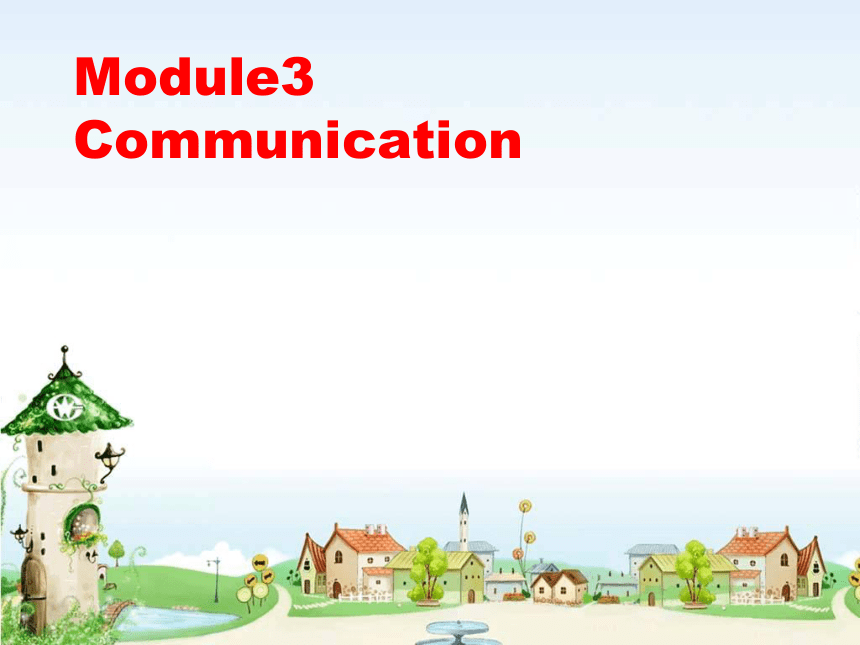 | |
| 格式 | zip | ||
| 文件大小 | 1.1MB | ||
| 资源类型 | 教案 | ||
| 版本资源 | 外研版 | ||
| 科目 | 英语 | ||
| 更新时间 | 2019-08-19 21:18:57 | ||
图片预览



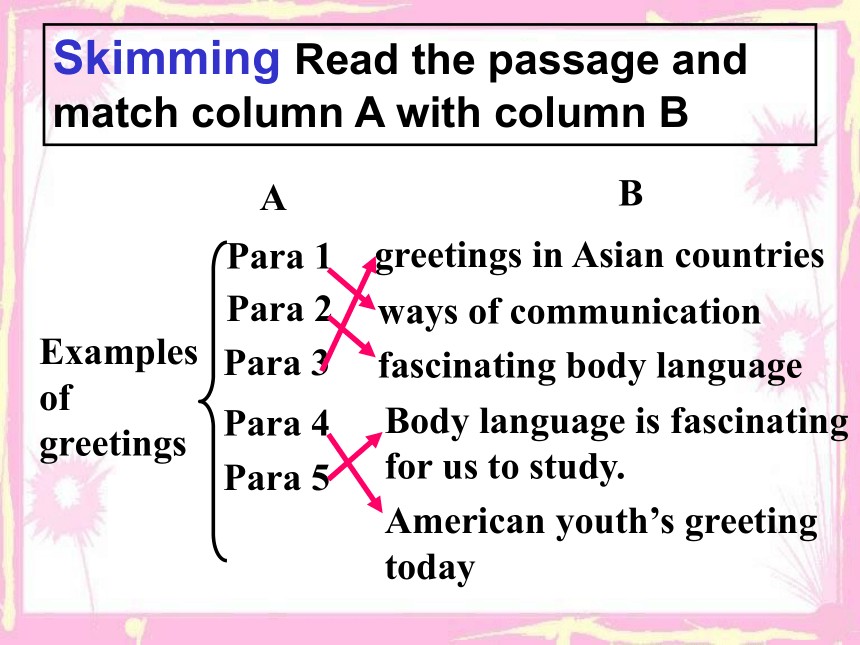
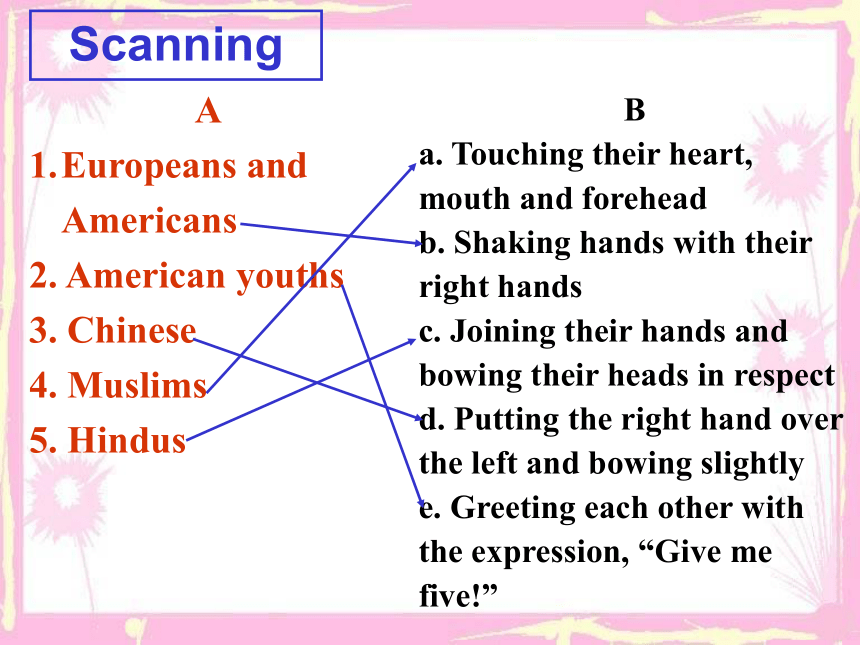
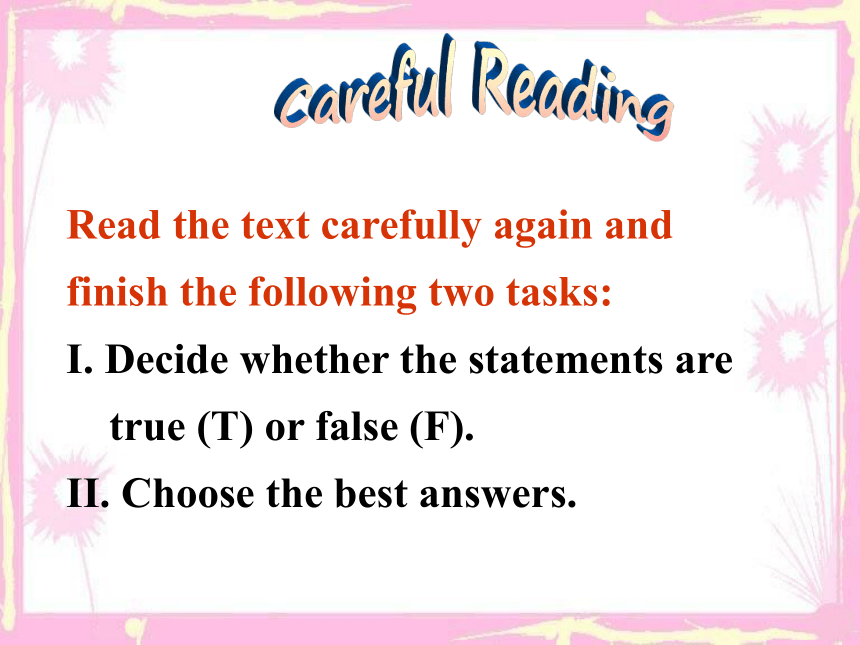

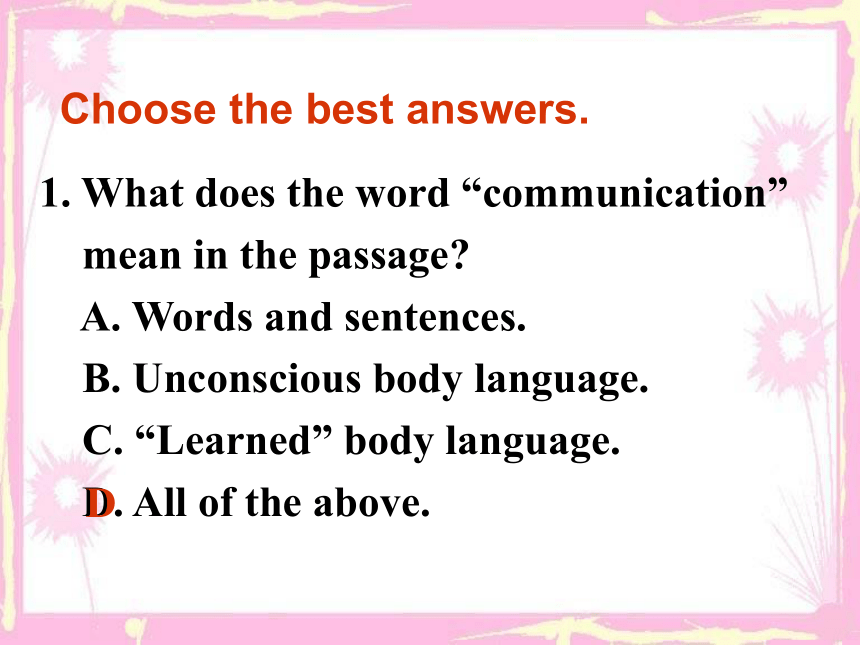
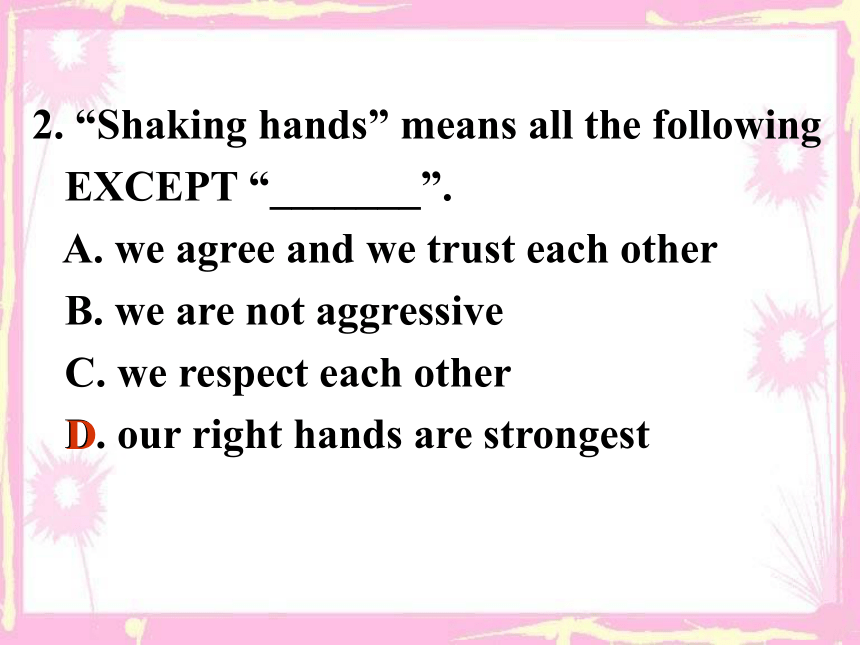
文档简介
课件22张PPT。Module3 CommunicationLook at the following pictures and guess what we will learn in the class.Body languageRead the text quickly and choose the best title.
1 Saying It Without Words
2 When in Rome, Do as the Romans
Do 入乡随俗
3 Greetings Around the World
4 Read My MindFast ReadingSkimming Read the passage and match column A with column BA
Europeans and Americans
2. American youths
3. Chinese
4. Muslims
5. HindusB
a. Touching their heart, mouth and forehead
b. Shaking hands with their right hands
c. Joining their hands and bowing their heads in respect
d. Putting the right hand over the left and bowing slightly
e. Greeting each other with the expression, “Give me five!” ScanningRead the text carefully again and
finish the following two tasks:
I. Decide whether the statements are true (T) or false (F).
II. Choose the best answers.Careful ReadingDecide whether the statements are true (T)
or false (F).
(1) Unconscious body language is used when we are introduced to strangers. ( )
(2) We always feel relaxed when meeting strangers. ( )
(3) Every culture has developed a formal way to greet strangers to show them we are not aggressive. ( )
(4) Europeans shake hands with their left hands. ( )
(5) We shake hands when we make a deal. ( )FFTFT What does the word “communication”
mean in the passage?
A. Words and sentences.
B. Unconscious body language.
C. “Learned” body language.
D. All of the above.Choose the best answers.D2. “Shaking hands” means all the following EXCEPT “_______”.
A. we agree and we trust each other
B. we are not aggressive
C. we respect each other
D. our right hands are strongestD3. Which of the following statements is
NOT true?
A. Giving a “salaam” is a kind of
“learned” body language.
B. A “high five” is a formal style of
greeting.
C. When we make a deal we shake
hands.
D. In Asia, touching each other when
they meet isn’t a common greeting.B4. Which of the following is the closest in meaning to the phrase “give away” in the last paragraph?
A. Give sb. sth. for free.
B. Throw away.
C. Give up.
D. Make sth. known to sb.D5. What’s the author’s purpose in
writing the passage?
A. To teach us how to greet others.
B. To advise us to use “learned” body
language.
C. To offer us some information about
“learned” body language.
D. To let us know why we shake
hands when we meet.CFill in the form:Put the right hand over the left and bow slightly.Touch their heart, mouth and forehead. (salaam)Join their hands and bow
their heads in respect.Let’s imitate the ways of greeting of
the different people, such as
Eurpeans, Chinese, Muslims, Hindus,
American youths.ActivityAmerican youthsChineseMuslimsEuropeans and AmericansWe use both _____ and _____________ to express our thoughts and opinions and to ____________ with other people. Just like spoken language, body language _____ from culture to culture.Filling the blankswordsbody languagecommunicatevariesPost reading Every culture has developed a formal way to ____ strangers. Traditionally, Europeans and Americans ___________. They do this with the _____ hand. That means I trust you. I’m not carrying a __________ weapon.
Greetings in _____ countries do not ______ touching the other person, but they always involve the hands.greetshake handsrightthreateningAsianinvolveToday American youths often greet each other with the expression, “___________!” Body language is fascinating for anyone to study.
People ___a____ much more by
their _______ than by their words.Give me fivegiveawaygesturesConclusioncommunicationsbody
languageunconsciouslearned spokenHomework1. Complete the exercises related to
Vocabulary and Reading in the
Workbook on page 80—82.2. Greetings vary from culture to culture.
Summarize the greetings in different countries according to the passage.Thank you!
1 Saying It Without Words
2 When in Rome, Do as the Romans
Do 入乡随俗
3 Greetings Around the World
4 Read My MindFast ReadingSkimming Read the passage and match column A with column BA
Europeans and Americans
2. American youths
3. Chinese
4. Muslims
5. HindusB
a. Touching their heart, mouth and forehead
b. Shaking hands with their right hands
c. Joining their hands and bowing their heads in respect
d. Putting the right hand over the left and bowing slightly
e. Greeting each other with the expression, “Give me five!” ScanningRead the text carefully again and
finish the following two tasks:
I. Decide whether the statements are true (T) or false (F).
II. Choose the best answers.Careful ReadingDecide whether the statements are true (T)
or false (F).
(1) Unconscious body language is used when we are introduced to strangers. ( )
(2) We always feel relaxed when meeting strangers. ( )
(3) Every culture has developed a formal way to greet strangers to show them we are not aggressive. ( )
(4) Europeans shake hands with their left hands. ( )
(5) We shake hands when we make a deal. ( )FFTFT What does the word “communication”
mean in the passage?
A. Words and sentences.
B. Unconscious body language.
C. “Learned” body language.
D. All of the above.Choose the best answers.D2. “Shaking hands” means all the following EXCEPT “_______”.
A. we agree and we trust each other
B. we are not aggressive
C. we respect each other
D. our right hands are strongestD3. Which of the following statements is
NOT true?
A. Giving a “salaam” is a kind of
“learned” body language.
B. A “high five” is a formal style of
greeting.
C. When we make a deal we shake
hands.
D. In Asia, touching each other when
they meet isn’t a common greeting.B4. Which of the following is the closest in meaning to the phrase “give away” in the last paragraph?
A. Give sb. sth. for free.
B. Throw away.
C. Give up.
D. Make sth. known to sb.D5. What’s the author’s purpose in
writing the passage?
A. To teach us how to greet others.
B. To advise us to use “learned” body
language.
C. To offer us some information about
“learned” body language.
D. To let us know why we shake
hands when we meet.CFill in the form:Put the right hand over the left and bow slightly.Touch their heart, mouth and forehead. (salaam)Join their hands and bow
their heads in respect.Let’s imitate the ways of greeting of
the different people, such as
Eurpeans, Chinese, Muslims, Hindus,
American youths.ActivityAmerican youthsChineseMuslimsEuropeans and AmericansWe use both _____ and _____________ to express our thoughts and opinions and to ____________ with other people. Just like spoken language, body language _____ from culture to culture.Filling the blankswordsbody languagecommunicatevariesPost reading Every culture has developed a formal way to ____ strangers. Traditionally, Europeans and Americans ___________. They do this with the _____ hand. That means I trust you. I’m not carrying a __________ weapon.
Greetings in _____ countries do not ______ touching the other person, but they always involve the hands.greetshake handsrightthreateningAsianinvolveToday American youths often greet each other with the expression, “___________!” Body language is fascinating for anyone to study.
People ___a____ much more by
their _______ than by their words.Give me fivegiveawaygesturesConclusioncommunicationsbody
languageunconsciouslearned spokenHomework1. Complete the exercises related to
Vocabulary and Reading in the
Workbook on page 80—82.2. Greetings vary from culture to culture.
Summarize the greetings in different countries according to the passage.Thank you!
